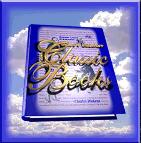World's Greatest Classic Books Feature:
Lyman Frank Baum
Featured works:
All
Books Written By
Lyman Frank Baum
BOOK LINKS
abebooks.co.uk.
A&E Shop
All-Ink.com
AlphaCraze.com
Amazon.ca
Amazon.com
Amazon.co.uk
BookCloseOuts.com
Booksamillion.com
Chapters.ca
eCampus.com
MUSIC LINKS
Music123
OldGlory.com
PlayCentric
PosterNow
PushPosters
Tower Records
Died: May 6, 1919, in Hollywood, California, United States
Lyman Frank Baum was an American writer best known for his series of books about the fantastic land of Oz. Baum wrote approximately sixty novels in his lifetime. He often used pen names, such as Louis F. Baum, George Brooks, Laura Bancroft, so as not to compete with himself. His books are renowned more for their storytelling appeal than their literary qualities.
His parents were Benjamin and Cynthia Baum. He was born into a family in which four of the five children had died in infancy. Frank himself had a defective heart and, thus, was a very protected child. Baum's father made a fortune in the Pennsylvania oil rush of 1860. He invested in Syracuse real estate and moved the family to large mansion in a city suburb.
Baum was educated in schools in Syracuse, New York and Peekshill Military Academy. He wasn't suited for either the rigid military life or educational facilities, and spent only two years at the academy. His hatred of it is also reflected in his books. Ironically, one of his sons became a soldier and another became a teacher.
Baum had many interests and livelihoods: reporter; poultry farmer; founding editor of New Era, Bradford, Pennsylvania; actor, producer, and theater manager; general store owner; editor of the Aberdeen Saturday Pioneer ; and traveling salesman. He married Maud Gage in 1882. Together, they had four sons. Maud was fascinated with the supernatural and the occult, causing Baum to complain that his house was haunted.
In 1899, his first book, Father Goose, was a popular success. This book was developed from the fairy tales he told his children. He became editor and publisher of The Show Window magazine from 1897 to 1902, a position that allowed him to concentrate on his writing.
In 1900, he began a series of fairy tales set in the land of Oz. The first in this series was the well-known Wizard of Oz, which was criticized at the time for its lack of moral principle. Although the book included traditional fairy tale characters, such as witches, the book modernized the tale by including technology, machinery and gadgets.
Before his death, Baum wrote fourteen books about Oz. He was the founding director of Oz Film Manufacturing Company, Los Angeles, which failed after its first year.
Plagued by poor health, Baum died nine days before his sixty-third birthday. His family's financial means were ensured by the many manuscripts that were published posthumously. The enormously successful musical film, The Wizard of Oz, was made after his death in 1939.

The Wizard of Oz
Baum’s most famous work is the story of Dorothy,
a young girl from Kansas, who is carried off by a tornado to the wonderful and enchanting
land of Oz.

The Wonderful Wizard of Oz/the Marvelous Land of Oz/Ozma of Oz: Boxed
Set
The classic story,
beloved for one hundred years, of Dorothy Gale, her dog, Toto, the Cowardly Lion, the Tin
Woodman, and the Scarecrow. Together, the new friends have incredible adventures in the
magical Land of Oz.






